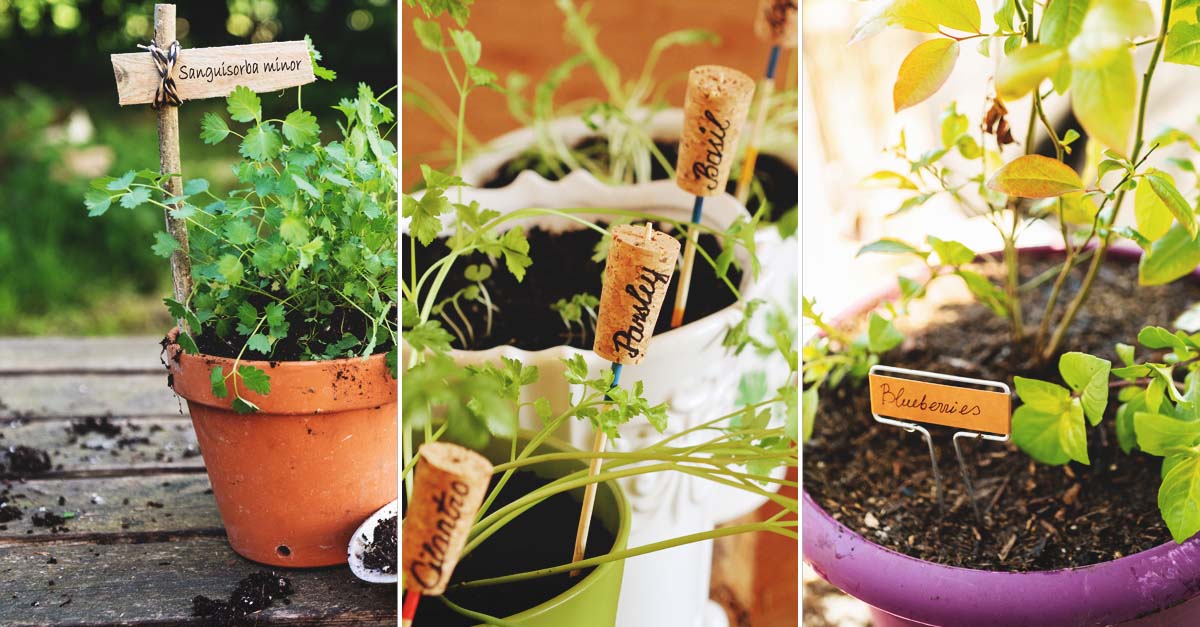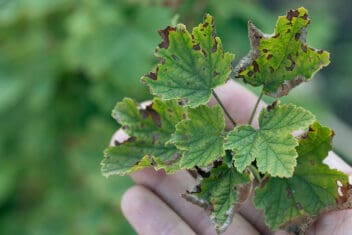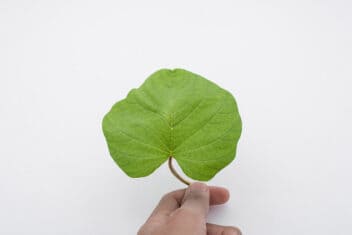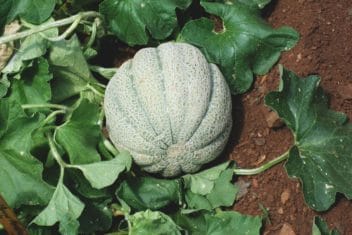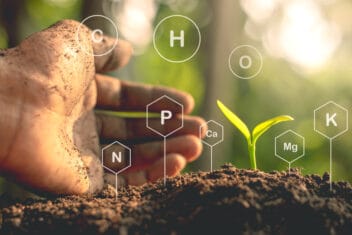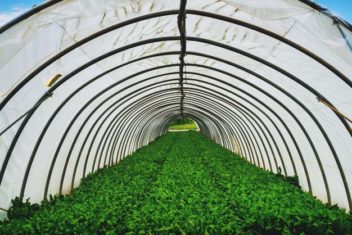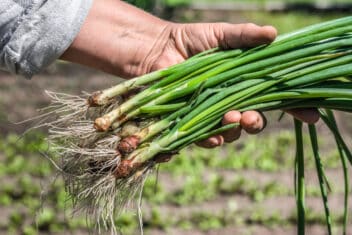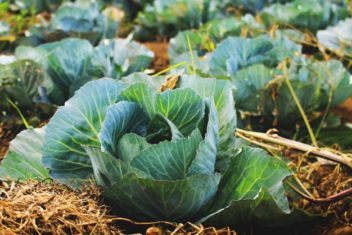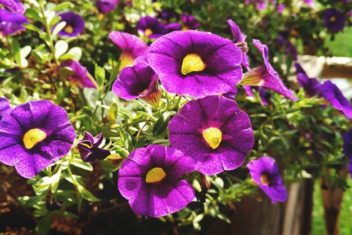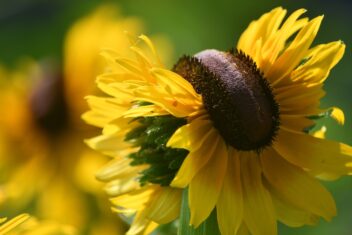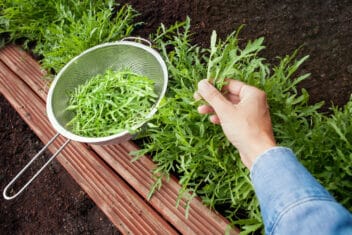Every year I think I can get away with not using plant markers, and I’m proven horribly wrong. Even so, I continue to have faith in my terrible memory when I’m starting seedlings and sowing seeds in my garden.
Sometimes, I draw a sketch of my boxes and various planters, thinking I’m a genius who will neatly mark everything off on paper and have it all in one place. It’s the perfect solution, I tell myself. I’ll be able to refer to my plant layout even when I’m indoors at my desk.
Every time, it’s a complete and utter failure. I forget to mark dates. I accidentally mix up where I’ve planted things. When I’m outside writing it all down, the paper invariably gets dirty and wet. I sometimes forget the paper outside, and it disappears or gets soaked and unreadable.
It’s an awful system that I continue to try to make work because I’m often too lazy or cheap to buy new plant markers. I reuse old plastic markers until there’s virtually no space left on them to write down what I’m sowing next. I lose them and accidentally recycle them along with broken or warped starter pots. I finally realized that I need to embrace plant markers – and there’s no reason not to. There are plenty of no-cost DIY options out there.

Why Do I Need Plant Markers?
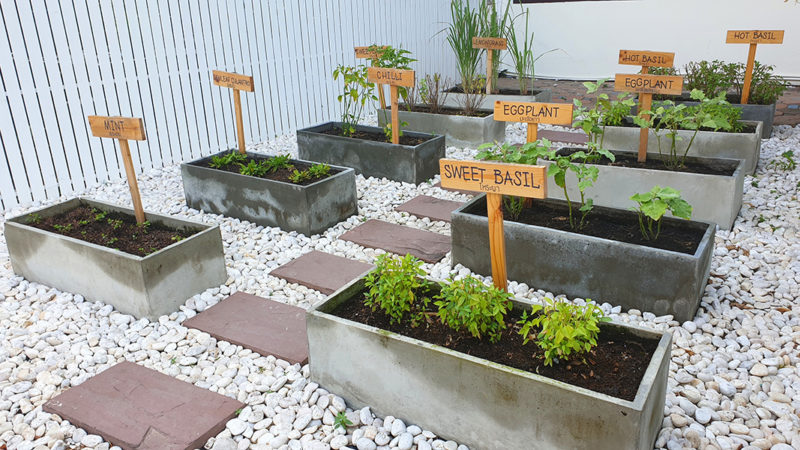
Why is it so important to mark where you’re planting things? Here are a few compelling reasons:
Knowing where you planted something is critical. You know you sowed kale seeds, but if you can’t remember where, then you’re stuck waiting until the seeds germinate. If your garden is a mess of weeds, you might even mistake seedlings for weeds and pluck them out by accident. Markers ensure you know that a spot in your garden is taken. It’s especially crucial if you’re starting seeds (indoors or outside) since the plot will be bare until the seeds germinate.
Organized seed starting. When starting seeds, it’s necessary to know what should be popping up where, especially if you’re growing different varieties. Some seedlings look similar (many brassicas, for instance, look alike in their young form), so it’s important to differentiate with markers. Make your life even easier and mark the planting date on the marker in addition to the plant type and variety.
Information for guests. Markers aren’t just for you. They’re useful for guests perusing your garden. If you’re part of a community garden or educational garden project, markers are a must for ensuring everyone who passes by knows what’s what.
DIY Plant Markers
You’ve perused the options at the store and aren’t satisfied with what’s available. Or maybe you want to try your hand at creating something for your garden? There are so many clever ways to DIY your own plant markers. Here’s a list of some of my favorite handmade plant markers that I’ve tried or have found around the web.
Thoughts may vary on this, but in my opinion, the perfect plant marker is solid, reusable, semi-attractive (e.g., it doesn’t make your garden look sloppy), and weatherproof. That said, you need to choose what works best for you.
1. Masking tape
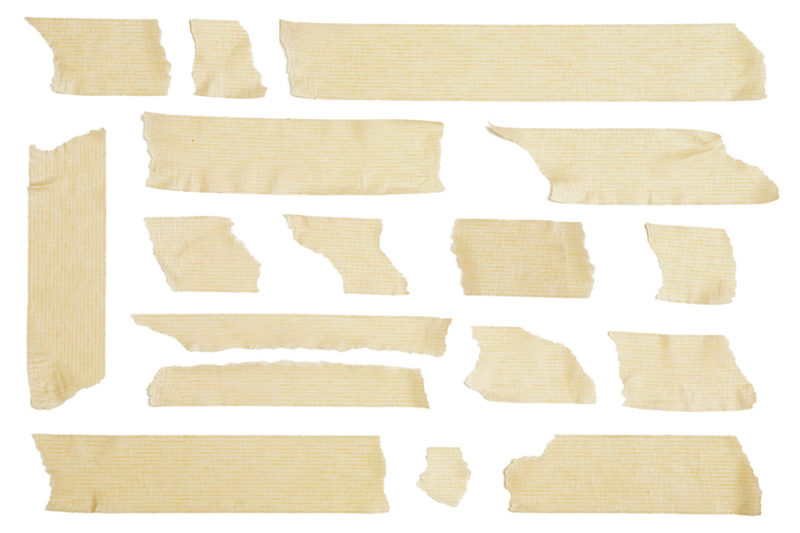
During my first attempt at seed starting, I had a tiny budget that I spent mostly on potting soil and containers. I didn’t even think about markers. At the time, I was new to gardening and couldn’t tell a kale seedling apart from a squash seedling. Everything looked like a plant to me, and I often misidentified weeds as baby plants. Oops! Today, I’m wiser, but I still use masking tape in a pinch.
Whether it’s on plastic solo cups or other DIY seed starting containers, a small piece of masking tape is a quick and easy way to mark down plant names when you’ve forgotten to buy markers. Thick masking tape provides you with more space than traditional markers to jot down extra info. Just don’t get it wet since your writing will bleed, and the tape will start to curl at the edges and eventually peel off.
2. Popsicle Sticks
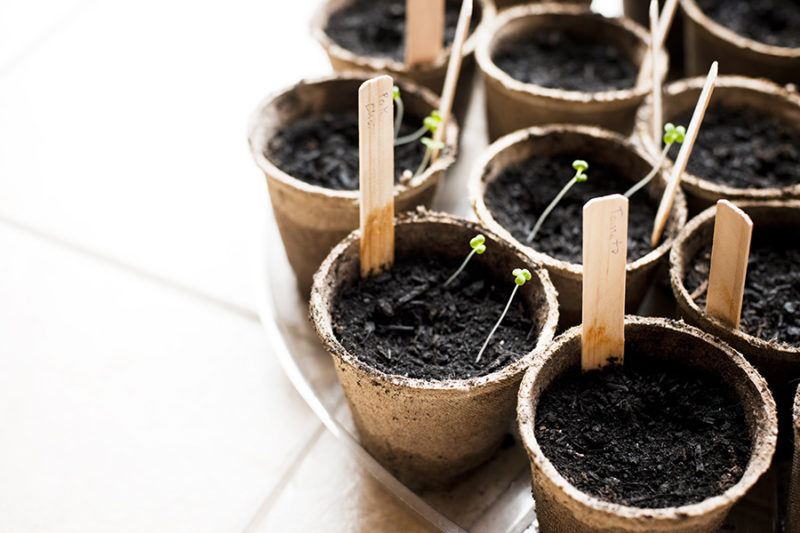
Popsicle sticks are a classic DIY plant marker solution. It’s the way many of us first experienced what a plant marker could be. The bean we watched grow seemingly like magic in elementary school was clearly marked with a popsicle stick. I’m not sure why the single plant needed a marker. We all knew it was a bean, but it was OUR bean.
3. Wine Corks
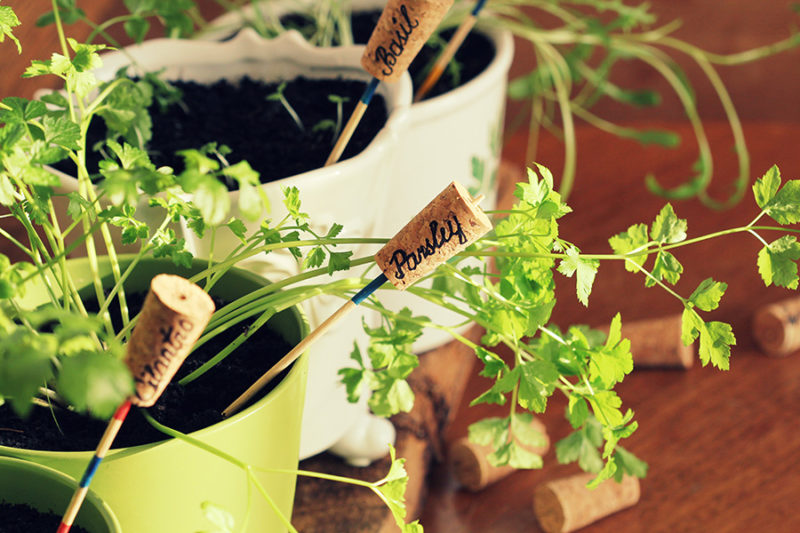
If you love a glass of wine now and then, use those wine corks as plant markers. Apparently, there’s not an actual shortage of cork in the world — despite what I was led to believe by everyone around me who drinks wine. That said, while cork can be tossed into your compost bin (yes, it’s biodegradable!), why not use those corks for garden purposes? Recycle them as plant markers and show the world that you’re a connoisseur of fine wines.
4. Branches and Twigs
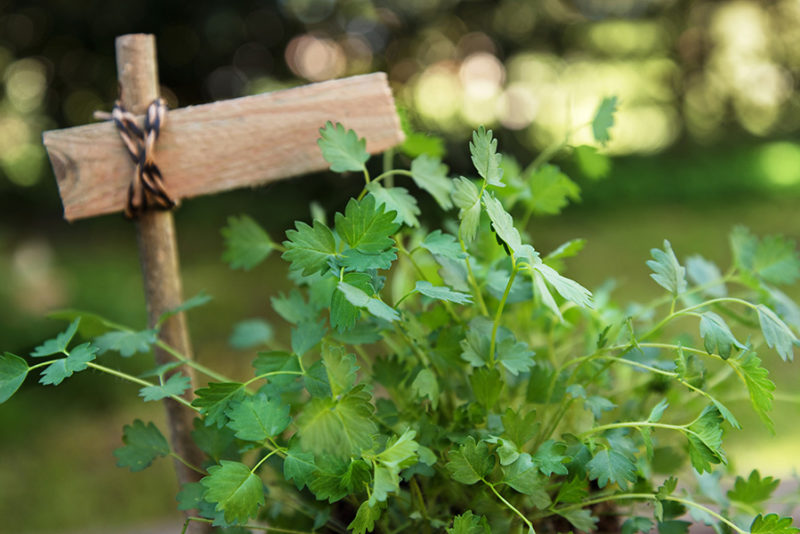
Branches and twigs are free and full of character. If you often walk your dogs in the woods or have a few trees on your property, find or use stray twigs and branches to create natural-looking plant markers. Paint them with food-safe paint and add a bit of color to your raised beds or containers.
5. Clay
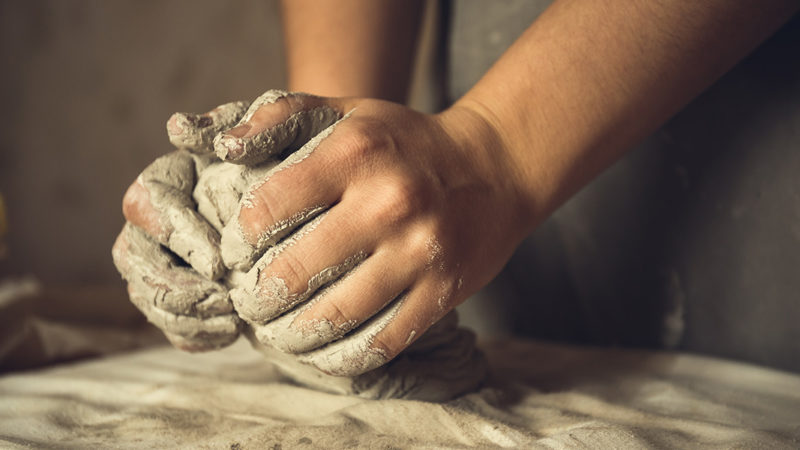
Handmade Stamped Clay is a more involved DIY plant marker project, but a fun idea if you’re interested in expanding your portfolio of hobbies. Alternatively, there are plenty of folks who create these types of handmade markers and sell them online (Etsy is a great place to look for stamped clay markers).
6. Old Utensils
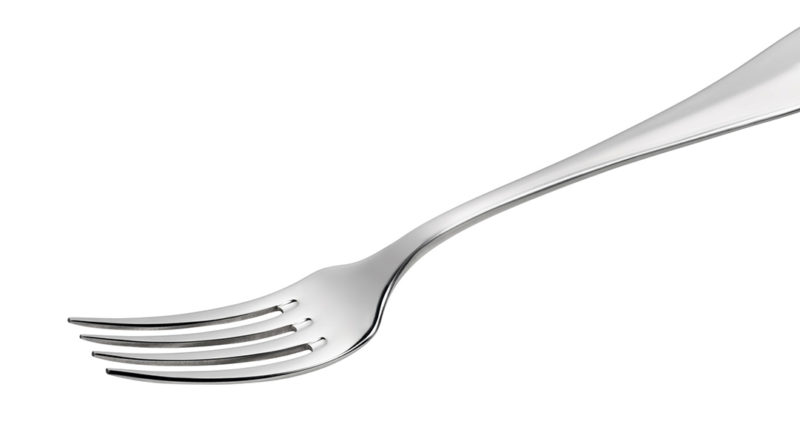
Have some unused utensils? Don’t toss out that old silverware set! It’s warped and water-stained, but it’s not useless. Paint or stamp forks, knives, and spoons and create a dining scape right in the earth.
7. Chalkboard Paint
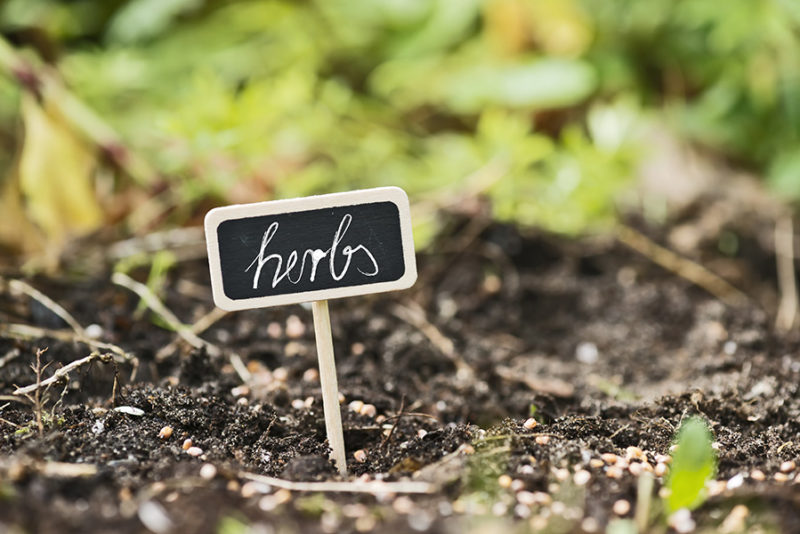
I LOVE Chalkboard Paint. I’m a bad DIYer. While I’m a creative-type (I have a bold imagination and love to spin a yarn), I’m not crafty. I once attempted to stain the steps in our home and splashed wood stain everywhere. The results were uneven and ugly, and my husband now looks at me wide-eyed in fear anytime I approach a can of paint.
But chalkboard paint? It makes me feel like a master crafter. I can do anything with chalk paint. I’ve painted pots, stenciled containers, and admired my work like I was Picasso. A small bottle will go a long way if you use it to paint the edges of markers. The only downside? Chalk paint isn’t waterproof, so this is a DIY solution best for indoor plants.
8. Clothespins
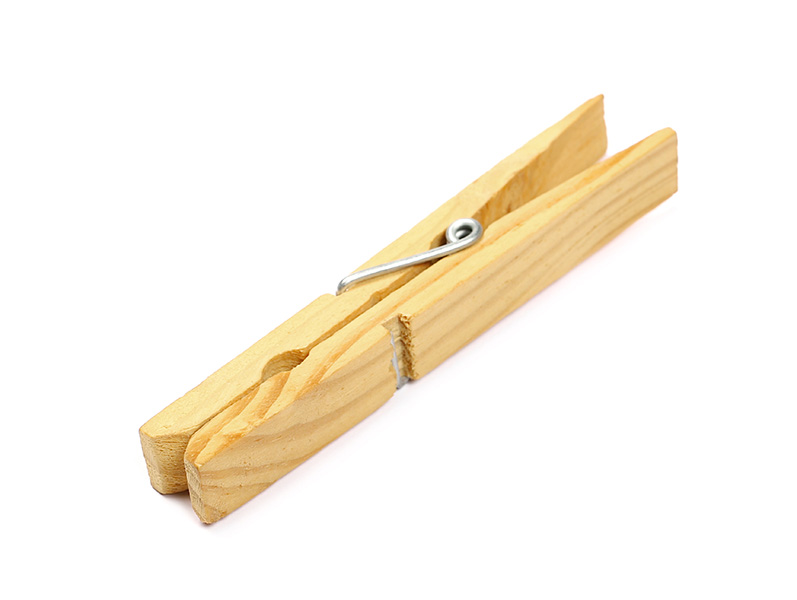
Clothespins are a classic DIY plant marker option. Whether you’ve got an excess of plastic or wooden clothespins, they make great little plant markers. Write directly on them or affix tape (or paint with chalkboard paint!!) and write down plant names.
9. Tea Bags
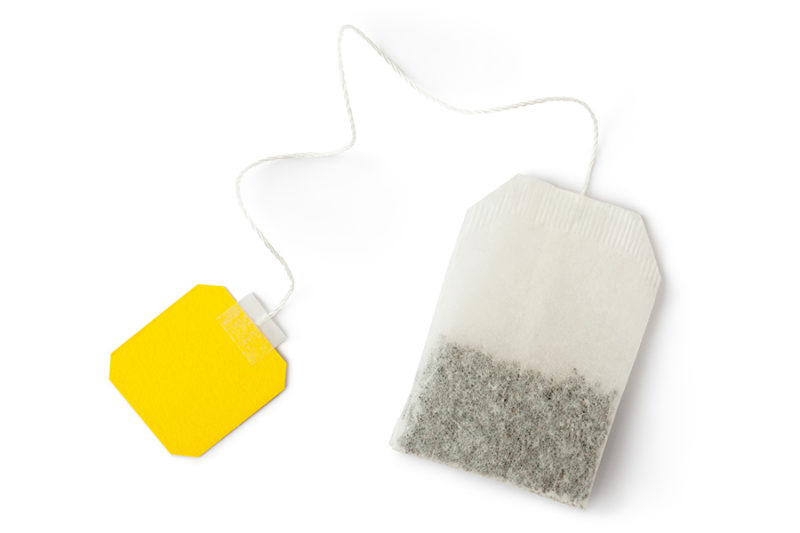
Tea bags are a bit of a flimsy option, but there’s no denying the results are cute as can be. Just keep this adorable plant marker idea for indoor plants.
10. Washi Tape
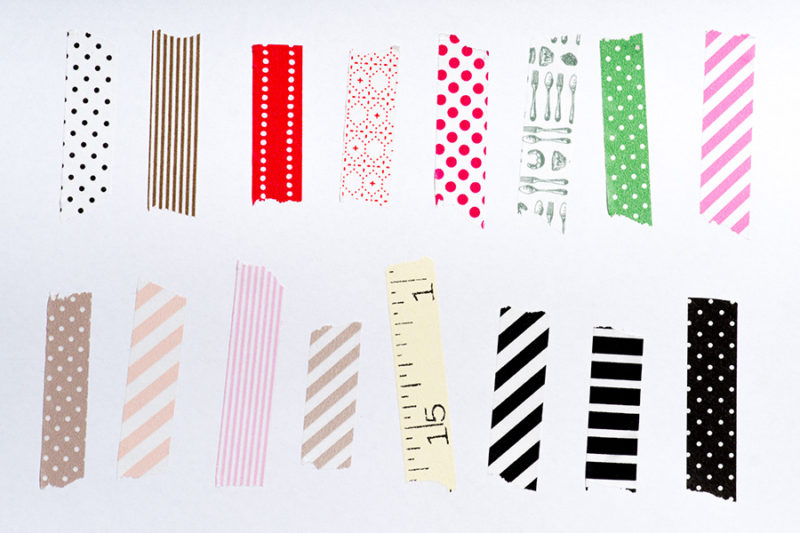
Remember how I said I loved chalkboard paint? Well, I love Washi Tape even more. I have several rolls of the stuff, which is incredible since I consider myself a terrible crafter. So why do I have these rolls of delicate Japanese tape on hand? Because they’re so beautiful! I love the slew of patterns and colors available. The tape is a work of art. While you can’t use this on its own as a plant marker, cover popsicle sticks or other surfaces with washi tape to create a beautiful upscaled version of something plain.
11. Seed Packets
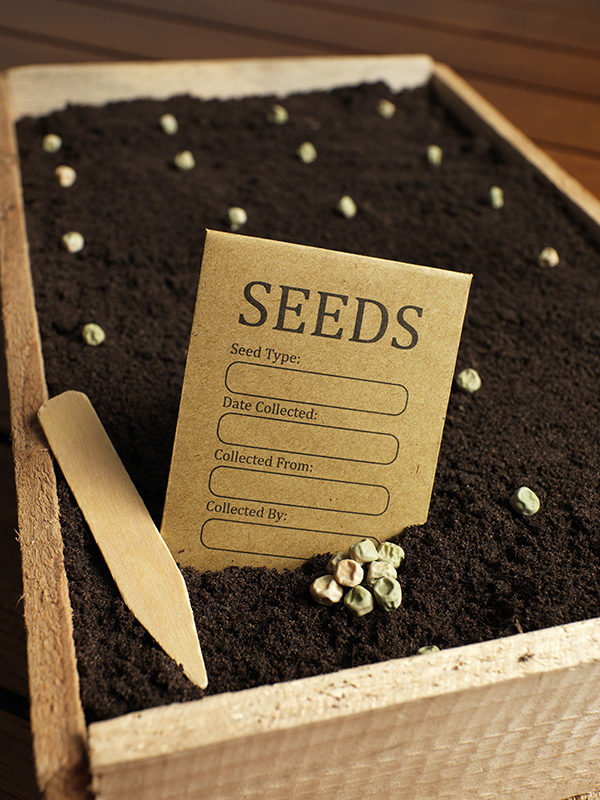
Seed packets are the lowest-stakes DIY plant marker option there is. Stick an empty seed packet in the place you’ve sown the seeds. Presto! Instant access to all the information you need. Seed packets, however, are not waterproof. Unless you’ve got a small garden, a single packet won’t be enough to cover all your plants, and how often do you empty a seed packet in a single go? If you do have old seed packets, though, they look lovely on display in the garden. Just make sure you laminate them to protect them from moisture.
12. Wine Bottles
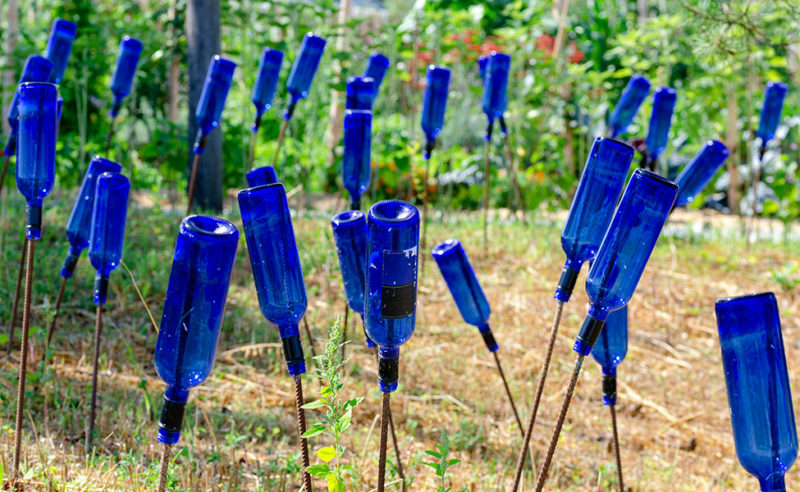
Wine bottles are best for a small garden, but writing plant names on wine bottles is an elegant way to add interest to the garden. The bottles can also double as water vessels in a pinch.
13. Rocks
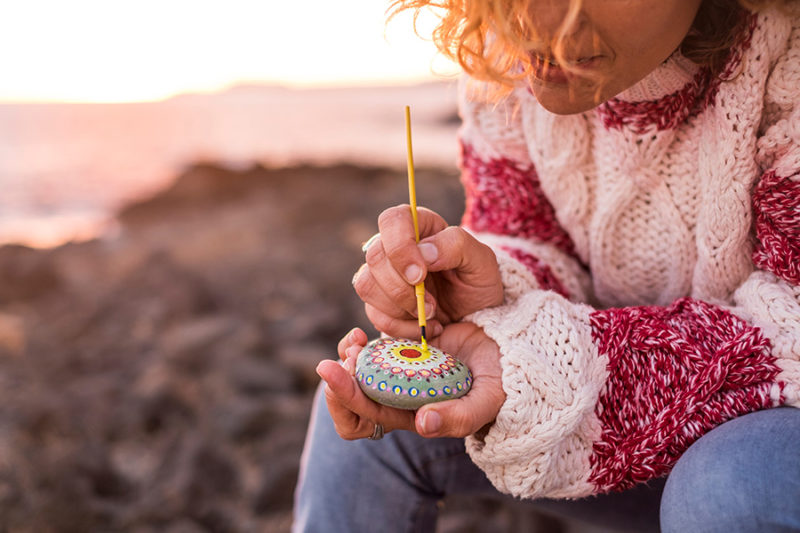
Painted rocks are a quintessential DIY garden marker, but in my onion is best revered for the artistically talented (again, not me). If you’ve got the talent, I highly recommend this plant marker method. Rocks will last forever and won’t get blown away by the wind. They’re also easy to find, so you’ll probably always have a supply.
14. Cardboard

Cardboard is a quick, simple, low-cost marker option for indoor seed starting purposes. Put those Amazon boxes to good use and cut up pieces of cardboard to mark all your seedlings. Careful not to get the bits of cardboard wet, though.
15. Wooden Signs
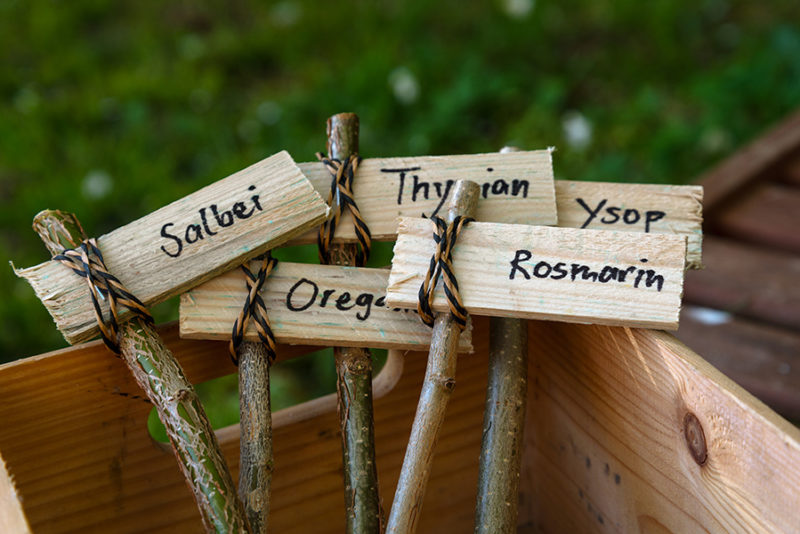
Wooden signs are another handmade route that requires a bit of finesse and talent. Done right, wooden signs really pop in a garden. You won’t want to make individual wooden signs for each plant in a big garden, but big signs made of wood (e.g., welcome to the garden) are an attractive tough nonetheless.
16. Old Rulers
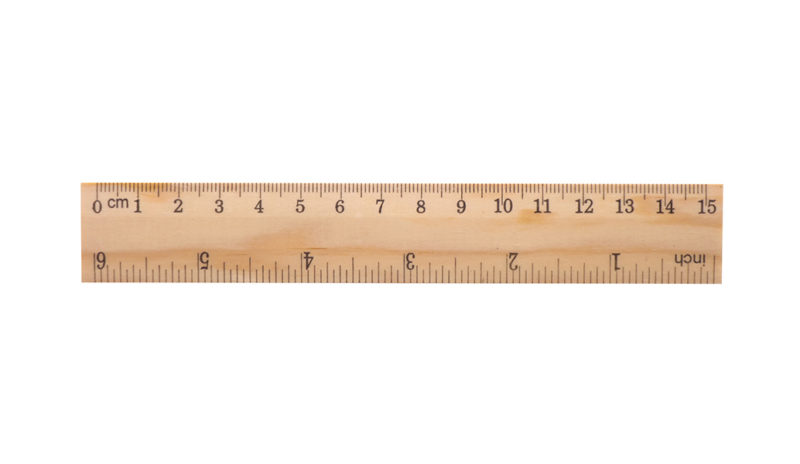
Old rulers make the cutest plant markers. I spotted this smart garden marker idea and initially thought, wow, what a great way to recycle this thing! And then I thought, who the heck actually owns that many rulers that they don’t need? If the answer is you, this is the perfect way to extend their lifespan when they’re broken, chipped, or no longer useful.
Storebought Plant Marker Options for Your Garden
I’ll be the first to admit I need a new system. Badly. So I set about trying to find a variety of plant marker ideas for the garden in hopes that I’ll find a solution that will fit my needs. While the DIY route is perfectly acceptable, not everyone has time to sit down and craft pretty markers for the garden — especially if you have a large variety of plants growing on your property.
Plastic Markers
These come in various shapes and sizes, and I love how inexpensive they are. I don’t usually like buying so much plastic, but they’re waterproof, sturdy, and easy to reuse. I make sure to collect them once the season is over, and since I often grow similar varieties each year, I can easily recycle them in my garden. If not, I cross out last year’s crop variety and write the new name below it.
Wooden markers
Another low-cost store-bought option but this time made of renewable materials. Wood markers won’t last forever, but they’re relatively tough and weather-resistant.
Decorative
Stores sell a variety of beautiful markers made of ceramic, metal, and other materials. Some are blank, so you can write in plant names while others are already stamped onto the marker. The benefit of these types of markers? They’re the most attractive ready-made option. They’re expensive, though, and not the ideal choice for a large garden.
The Bottom Line
Garden organization can be tough, especially when the season starts to roll along at a quick pace. Even if you find it tough to keep up, make using markers a priority to ensure you have the basic level of organization covered. You’ll never have to mistakenly plant something twice again — who wants to waste seeds, right?
